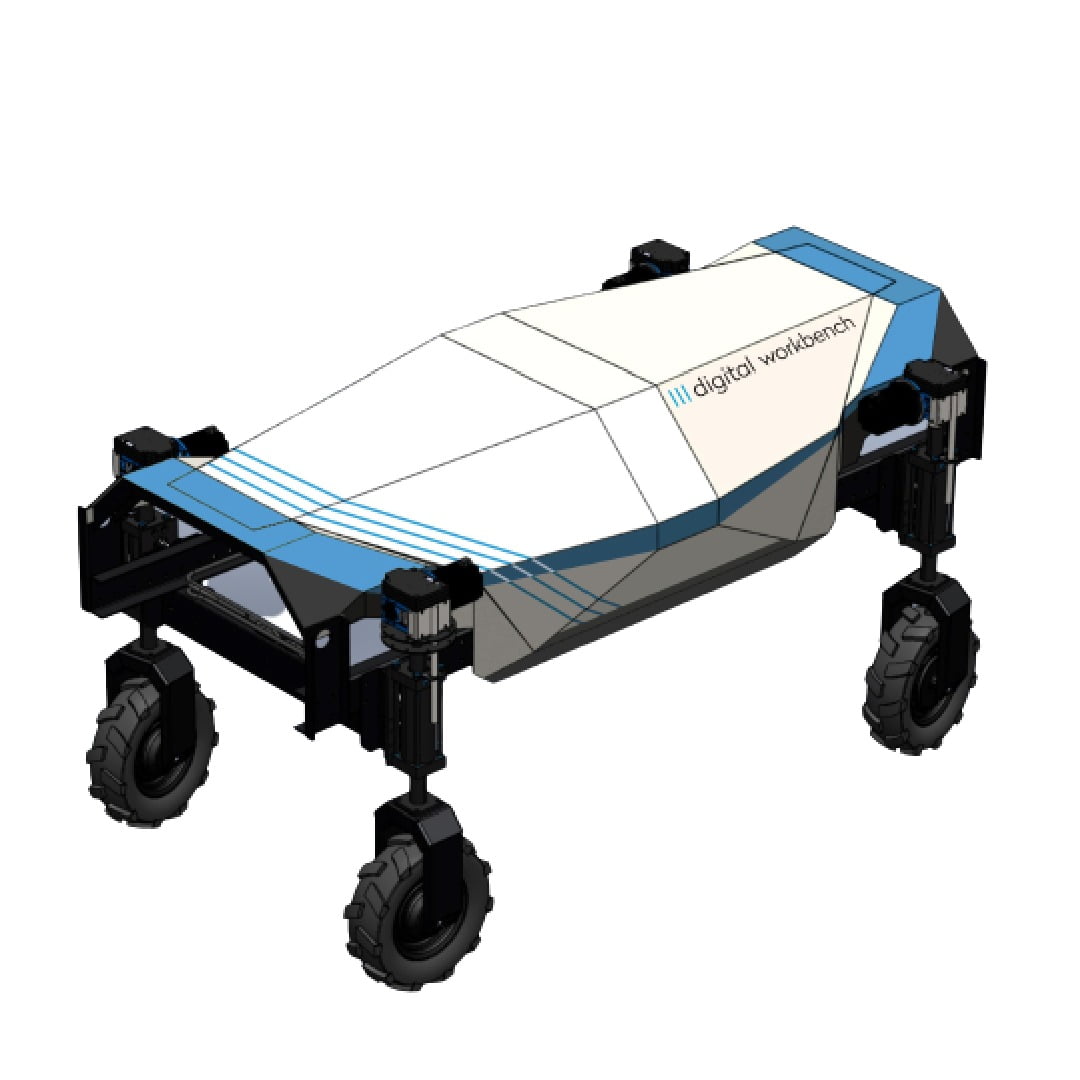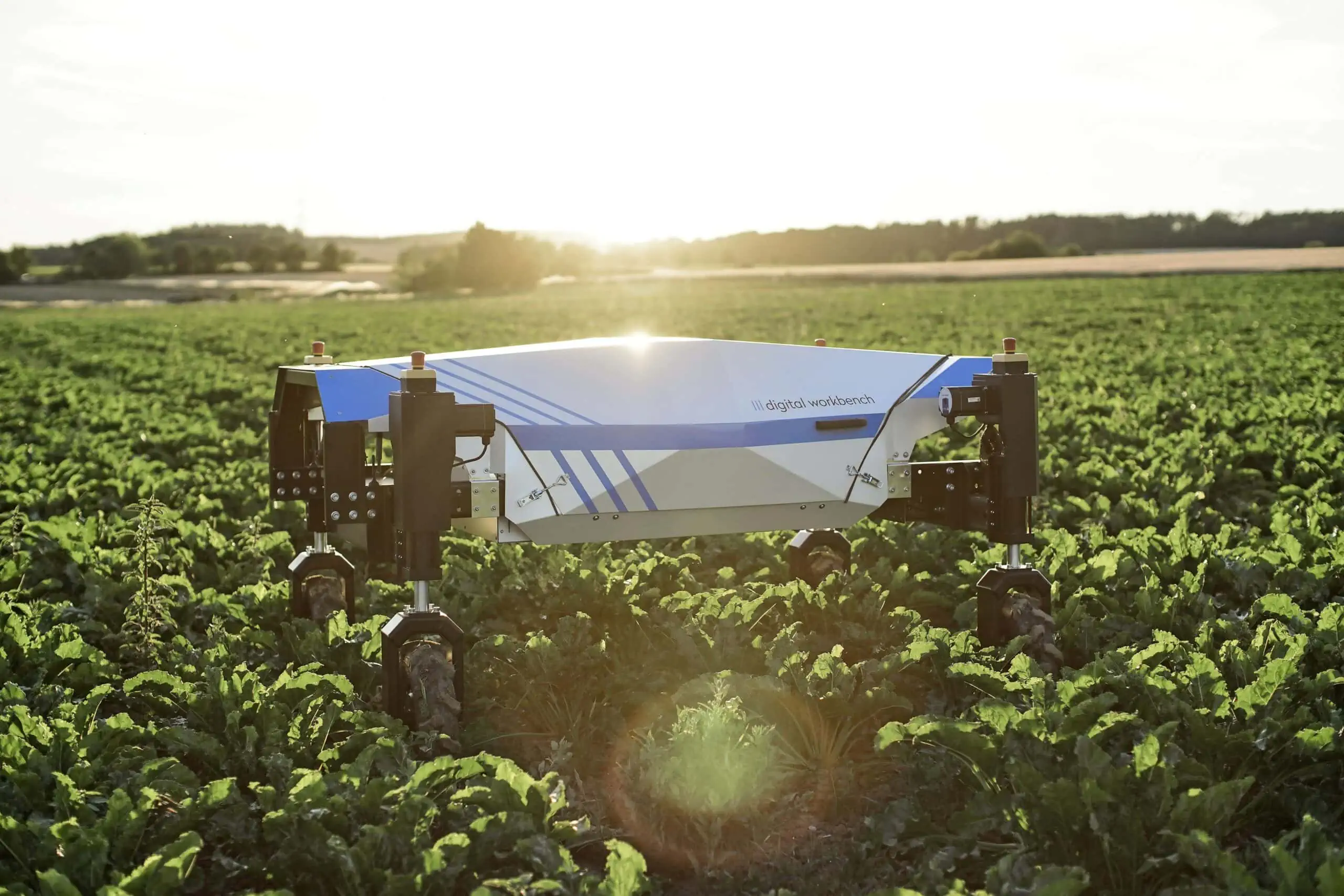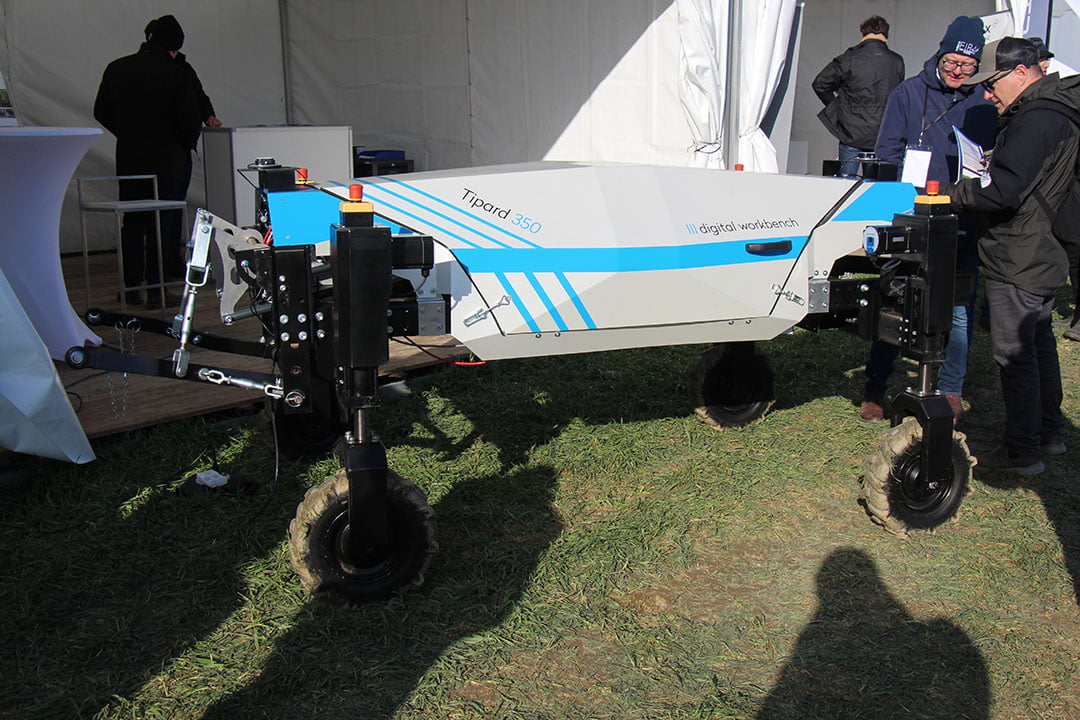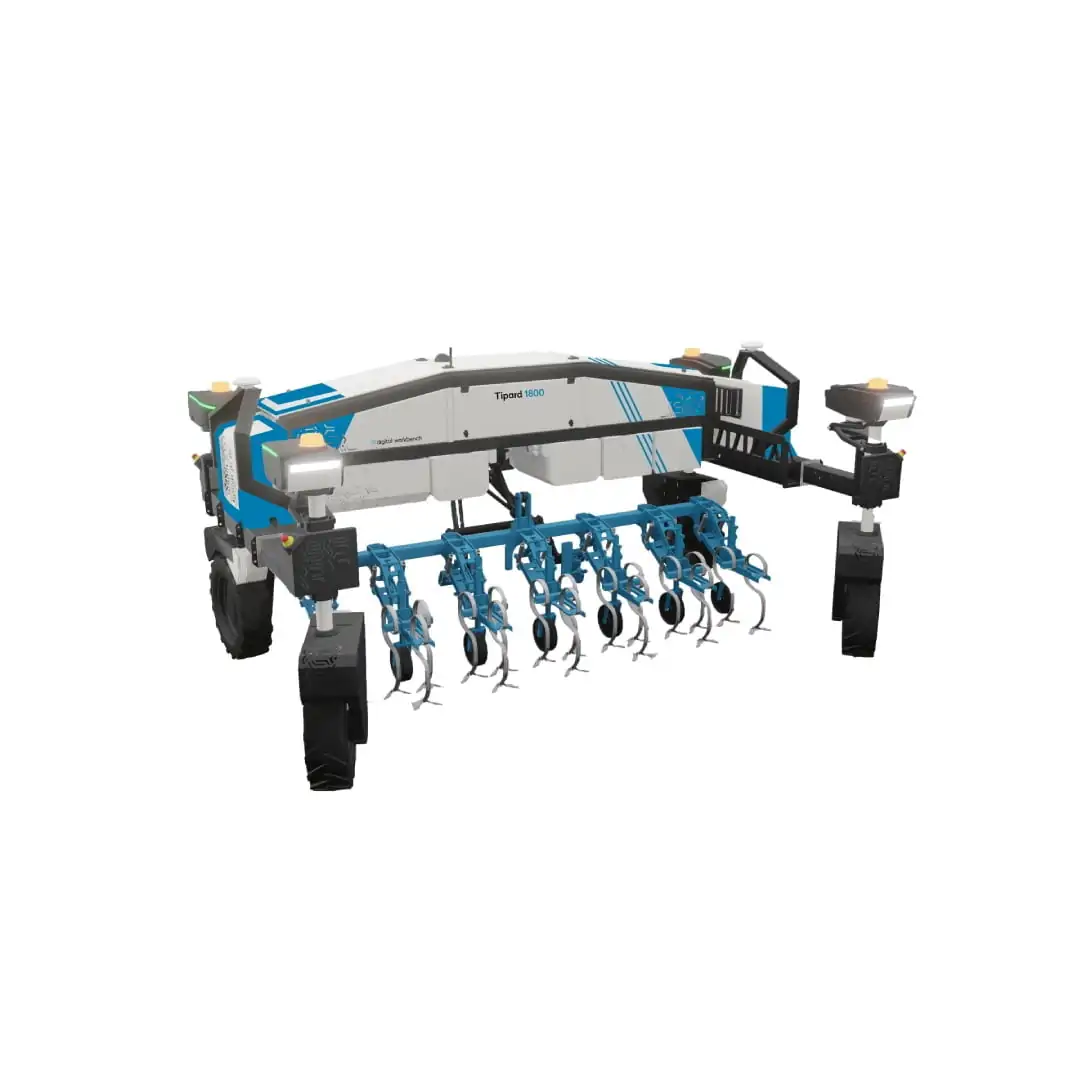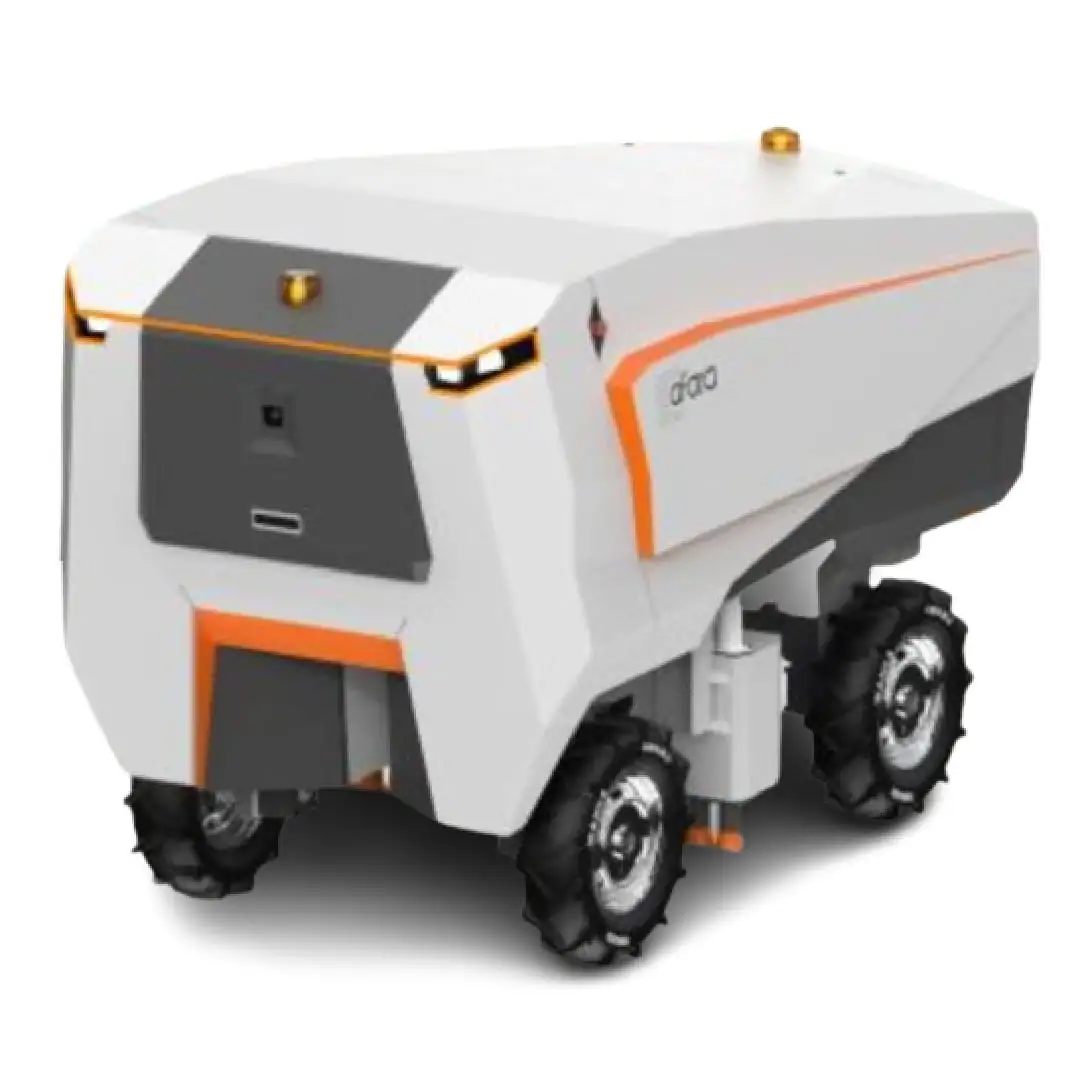The Tipard 350 autonomous carrier platform represents a significant leap forward in agricultural logistics, offering a versatile and intelligent solution for the modern farm. Engineered to enhance operational efficiency and substantially reduce labor costs, this innovative robotic system is designed to autonomously transport a wide array of goods across diverse agricultural terrains. From open fields to confined indoor spaces, its robust construction and advanced navigation capabilities make it an indispensable tool for contemporary farm management.
This platform goes beyond simple transport, integrating state-of-the-art technology to ensure precision, reliability, and adaptability. It embodies a new era of agricultural robotics, where intelligent automation supports sustainable practices and optimizes resource utilization. The Tipard 350 is not just a machine; it’s a strategic asset designed to transform daily farming operations into a more streamlined, productive, and economically viable endeavor.
Key Features
The Tipard 350 is engineered with a suite of advanced features that set it apart as a leading autonomous carrier platform in agriculture. Its Advanced Autonomous Navigation system is central to its capabilities, leveraging an integrated dual-RTK GNNS receiver for unparalleled precision in steering and self-localization. This state-of-the-art technology allows the platform to maintain highly accurate paths, crucial for tasks requiring exact positioning. Furthermore, this system is augmented by camera-controlled steering, specifically optimized for navigating sensitive row crops, ensuring minimal disturbance and highly accurate path following across complex agricultural landscapes, even when GPS signals might be partially obscured.
Beyond navigation, the platform excels in Versatile Payload Capacity & Handling. Despite its robust yet exceptionally lightweight construction, the Tipard 350 boasts a significant payload capacity of approximately 150 kg, enabling it to efficiently transport everything from freshly harvested crops and essential farming tools to various agricultural supplies. This substantial capacity, combined with its durable design, ensures reliable and consistent delivery across challenging farm environments, reducing the need for multiple trips or heavier, more soil-compacting machinery.
A standout characteristic is its Exceptional Maneuverability. The Tipard 350 features a permanent 4-wheel drive system where each wheel can independently turn a full 360 degrees. This innovative design allows for a variety of sophisticated steering regimes, including Ackermann steering for smooth turns, 4-wheel steering for enhanced control, crab steering for lateral movement, and the ability to turn precisely on the spot. This provides unmatched agility, making it adept at navigating tight spaces, intricate field layouts, and avoiding obstacles with ease. Furthermore, its Adjustable Chassis & Clearance is a critical advantage for adapting to diverse agricultural conditions. Telescopic axles allow for easy and precise adjustment of the track width from 1.0m to 1.5m. This adjustment can even be performed tool-free by simply performing a 90-degree direction change, offering remarkable flexibility. Coupled with hydraulic self-leveling, the platform’s ground clearance can be adjusted between 0.5m and 0.7m, ensuring optimal performance and stability across varied terrains, from uneven fields to sloped vineyards, while critically minimizing soil compaction.
The platform’s Robust and Lightweight Design is another key differentiator. With a machine weight of approximately 350kg and a maximum gross weight of 500kg, its construction is both durable for demanding agricultural use and extremely light. This low weight significantly reduces soil compaction, a major concern in modern farming, thereby preserving soil health and structure for long-term productivity. Finally, the Tipard 350 incorporates an Open Hardware and Software Interfaces architecture. This innovative module kit provides open interfaces, facilitating easy integration of custom applications, sensors, and implements. This ensures the platform is not a closed system but a flexible tool that can be scaled and adapted to specific farm needs and integrated seamlessly with existing work planning and GIS systems, future-proofing the investment for agricultural businesses. To protect its sophisticated internal components, the platform features Durable and Protected Electronics, including vibration-free mounting for sensitive electronics and an IP65-protected control box equipped with a unique air-to-air heat exchanger, guaranteeing reliability and longevity even in harsh environmental conditions.
Technical Specifications
| Specification | Value |
|---|---|
| Dimensions (W x L x H) | 1.20m-1.70m x Max. 2.20m x 1.10m-1.30m |
| Max. Gross Weight | 500 kg |
| Machine Weight | Approx. 350 kg |
| Payload Capacity | Approx. 150 kg |
| Axle Track | 1.0m to 1.5m (adjustable via telescopic axles or 90° direction change) |
| Ground Clearance | 0.5m to 0.7m (adjustable, custom clearances upon request) |
| Drive System | Permanent 4-wheel drive, 360-degree independently turning wheels |
| Steering Regimes | Ackermann, 4-wheel, crab steering, turning on the spot |
| Energy Supply | Primary 48V energy grid (can be equipped with different battery packs and/or a range extender) |
| Control Interface | Remote control unit for movement, intuitive web interface for machine data and automatic mode configuration |
| Navigation System | Integrated dual-RTK GNNS receiver for precise steering and self-localization, camera-controlled steering for row crops |
| Chassis Features | Robust, lightweight, hydraulic coupling for self-leveling, vibration-free mounting for electronics |
| Control Box Protection | IP65-protected with air-to-air heat exchanger |
| Drive Modes | Two modes: slower for precise maneuvering, faster for transport |
Use Cases & Applications
The Tipard 350 autonomous carrier platform offers a broad spectrum of practical applications across various agricultural operations, significantly enhancing efficiency and precision. It is exceptionally well-suited for open-field applications, even in very difficult terrain, where its robust chassis, permanent 4-wheel drive, and adjustable clearance ensure reliable and stable transport of goods. This capability minimizes manual labor requirements for hauling, optimizes logistics, and allows for continuous operation regardless of weather conditions that might impede human operators.
For operations requiring intricate navigation and precise movements, the Tipard 350 excels in tight and narrow spaces inside buildings and halls. Its unique ability to perform crab steering and turn on the spot makes it ideally suited for maneuvering through the confined aisles of greenhouses, storage facilities, packing houses, or processing plants. This facilitates efficient internal transport tasks, reducing bottlenecks and improving workflow within agricultural infrastructure.
In the realm of research and development, particularly in plant breeding, the platform is an invaluable asset. It enables 24/7 autonomous data collection, ensuring perfectly aligned sensors and imaging equipment. This consistent and unbiased approach to data acquisition is critical for high-throughput phenotyping, genetic improvement programs, and precise monitoring of plant growth and health, providing researchers with reliable, continuous data streams. Furthermore, its precision allows for precisely taking soil samples for regular and sustainable soil analyses across fields. This automated, systematic sampling contributes to informed decision-making regarding fertilization, irrigation, and overall soil health management, leading to more sustainable and productive farming practices.
The Tipard 350 is also designed for seamless integration into complete automation systems and concepts for the off-highway sector. This means it can become a core, intelligent component of larger, interconnected farm automation strategies, working in concert with other autonomous machinery, drones, and data systems to create a fully optimized operational environment. Farmers can also leverage its capability for autonomous operation with external course plotting, supporting the upload of pre-generated shape, CSV, or GeoJSON files. This feature streamlines field operations by ensuring the platform adheres strictly to predefined routes, tasks, and boundaries, maximizing efficiency and minimizing errors, especially for precision agriculture applications like targeted spraying or seeding.
Strengths & Weaknesses
| Strengths ✅ | Weaknesses ⚠️ |
|---|---|
| Exceptional Maneuverability: Permanent 4-wheel drive with 360-degree independently turning wheels enables diverse steering regimes (Ackermann, 4-wheel, crab, turning on the spot) for navigating complex terrains and tight spaces. | Initial Investment: As an advanced robotic platform, the initial capital expenditure may be significant for smaller farms. |
| Precision Navigation: Integrated dual-RTK GNNS receiver provides highly accurate steering and self-localization, crucial for precision agriculture tasks. | RTK Infrastructure Dependence: Optimal precision relies on RTK correction signals, which may require existing or new infrastructure on the farm. |
| Minimal Soil Compaction: Robust yet extremely light design (350kg machine weight) helps preserve soil structure and health. | Payload Limitation: While versatile, the 150kg payload capacity might be limiting for very large-scale bulk transport tasks compared to traditional machinery. |
| High Adaptability: Adjustable chassis clearance (0.5-0.7m) and axle track (1.0-1.5m) via telescopic axles or 90° direction change allows for operation in diverse crop types and field conditions. | Battery/Range Extender Management: Requires active management of battery packs or range extender for continuous 24/7 operation, though options are available. |
| Durability & Reliability: Features vibration-free electronics mounting and an IP65-protected control box with an air-to-air heat exchanger, ensuring longevity in harsh environments. | Technical Proficiency Required: While intuitive, configuring advanced automatic modes and integrating with external systems may require some technical understanding. |
| Open Integration: Innovative module kit with open hardware and software interfaces allows for easy customization and integration into existing farm management and GIS systems. | |
| Worldwide Service & Support: Backed by an international network of sales partners, ensuring global service and support availability. |
Benefits for Farmers
The adoption of the Tipard 350 autonomous carrier platform translates into tangible benefits for farmers, directly impacting their operational efficiency, cost structures, and sustainability efforts. By automating transport tasks, the platform significantly reduces labor costs and frees up human resources for more complex, value-added activities. Its ability to operate autonomously 24/7 means tasks can be completed around the clock, leading to increased operational efficiency and timely execution of critical farm processes.
The precision offered by its RTK GNNS navigation and camera-controlled steering contributes to improved yield quality and quantity by minimizing crop damage during transport and enabling accurate data collection for optimized plant breeding. Furthermore, the platform’s robust yet extremely light design (350kg machine weight) plays a crucial role in minimizing soil compaction, preserving soil health and structure, which is vital for long-term agricultural sustainability. This focus on sustainable practices, coupled with enhanced productivity, positions farmers to achieve higher profitability and environmental stewardship simultaneously.
Integration & Compatibility
The Tipard 350 is engineered with a strong emphasis on seamless integration and compatibility within existing and future agricultural ecosystems. Its innovative module kit features open hardware and software interfaces, making it exceptionally adaptable for custom applications and scalable solutions. This open architecture allows farmers and developers to easily integrate their own specific tools, sensors, or software, ensuring the platform can evolve with changing farm needs.
Crucially, the Tipard 350 is designed for easy integration into existing work planning and GIS systems. This means it can communicate and share data with farm management software, enabling centralized control, data analysis, and optimized task allocation. Farmers can upload pre-generated shape, CSV, or GeoJSON files for external course plotting, ensuring the autonomous platform operates according to precise field plans and data-driven strategies. This level of compatibility ensures the Tipard 350 acts as a cohesive component within a broader automated farm infrastructure, rather than a standalone solution.
Frequently Asked Questions
| Question | Answer |
|---|---|
| How does this product work? | The Tipard 350 navigates autonomously using an integrated dual-RTK GNNS receiver for precise self-localization and camera-controlled steering for row crops. Its permanent 4-wheel drive with independently turning wheels allows for various steering modes, while a remote control unit and web interface enable operation and configuration. |
| What is the typical ROI? | By enhancing operational efficiency, significantly reducing labor costs through autonomous transport, and enabling 24/7 data collection for plant breeding, the Tipard 350 contributes to substantial cost savings and improved resource management, leading to a strong return on investment. |
| What setup/installation is required? | The platform supports autonomous operation with external course plotting, allowing for the upload of pre-generated shape, CSV, or GeoJSON files. Its open hardware and software interfaces also facilitate easy integration into existing work planning and GIS systems. |
| What maintenance is needed? | The Tipard 350 is built with a robust, lightweight chassis and features vibration-free mounting for its electronics, housed in an IP65-protected control box with an air-to-air heat exchanger. This design minimizes maintenance needs, supported by a worldwide service and support network. |
| Is training required to use this? | While the Tipard 350 offers advanced capabilities, its control is managed via an intuitive web interface for machine data retrieval and automatic mode configuration, alongside a remote control unit for movement, suggesting a manageable learning curve for operators. |
| What systems does it integrate with? | The Tipard 350 is designed for seamless integration into complete automation systems and concepts for the off-highway sector. Its open hard- and software interfaces allow for easy connection with existing work planning and GIS systems. |
Pricing & Availability
The pricing for the Tipard 350 autonomous carrier platform is not publicly available and can vary significantly based on configuration, regional factors, and specific integration requirements. For detailed pricing information, availability, and to discuss a customized solution tailored to your farm’s needs, please contact us via the Make inquiry button on this page.
Support & Training
Tipard 350 offers comprehensive support and training to ensure optimal utilization and longevity of the autonomous carrier platform. A worldwide service and support network is available through an international network of sales partners, providing farmers with reliable assistance wherever they are located. This global presence ensures that technical queries, maintenance needs, and spare parts are readily accessible.
Regarding training, the platform is designed with an intuitive web interface for machine data retrieval and automatic mode configuration, alongside a user-friendly remote control unit for movement. While advanced features and integration may benefit from initial guidance, the system’s design aims to simplify operation, allowing farmers and their teams to quickly become proficient in managing and deploying the Tipard 350 for their daily tasks.

